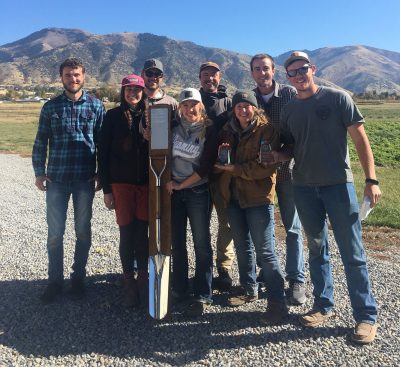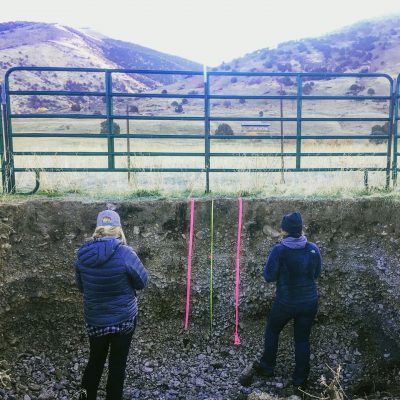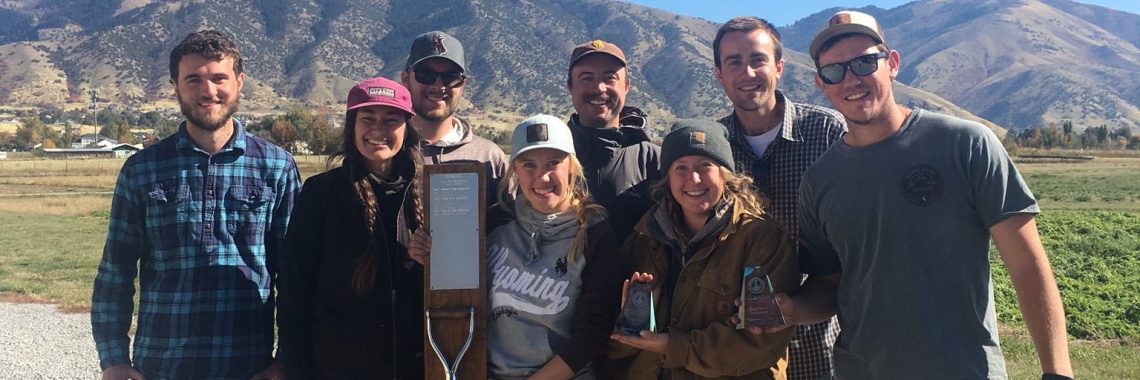
University of Wyoming’s soil judging team bested those from three other universities to win regional competition Oct. 10-12 at Utah State University in Logan.
Students in the Department of Ecosystem Science and Management beat Colorado State University, Utah State University and the University of Idaho.
UW’s team also won the group judging category. This is the first time the team has come in first place in regionals since becoming a class/team four years ago and also the first time the team has fielded eight members, said Ph.D. student Chelsea Duball, Exeter, N.H., the team’s coach.
UW placed six students in the top 12. Austin Jacobson, Cheyenne, placed second; Noah Cheshier, Star Valley, fourth; Taylor Bitt, Cheyenne, fifth; and Matthew Ratterman, Kansas City, Mo., 10th. Megan Anderson, Sturgis, S.D., was 11th, and Madelyn Haeg, Bloomington, Minn., 12th.
Students spend a day practicing and learning about the local soils, then compete for one day by judging three soil profiles; two judged individually and one as a group.
UW students have been practicing since the start of the semester, working in the laboratory on concepts, then in field sites on the prairie east of Laramie and in soil pits in the Laramie Range of the Medicine Bow-Routt National Forests.

“Despite the short time period for preparation, the students did an exemplary job learning the concepts and applying them to a new region, northeast Utah,” said Karen Vaughan, the team adviser and an assistant professor in the Department of Ecosystem Science and Management.
Students have 60 minutes to complete their soil descriptions. In competition, students enter a large, excavated hole and examine a marked soil profile. They describe the soil by layer and note the color, texture, percent of rock fragments, structure and soil features, such as carbonates and clay films.
They then move out of the hole and describe the landscape features and use their overall descriptions to make soil interpretations, such as water movement and storage and building site suitability. They then classify the soil using soil taxonomy.
“Above all, the biggest takeaway from this experience is the opportunity for students to quite literally apply their knowledge,” said Duball. “Although they spend a whole semester learning soil morphological concepts and skills, actually seeing and feeling the soil properties in competition helps the students to better understand the course material from a hands-on perspective.”
The team now advances to national competition this spring in Ohio.
“Coming away from this successful experience, the students are already asking when our first practice is for nationals,” said Duball.





